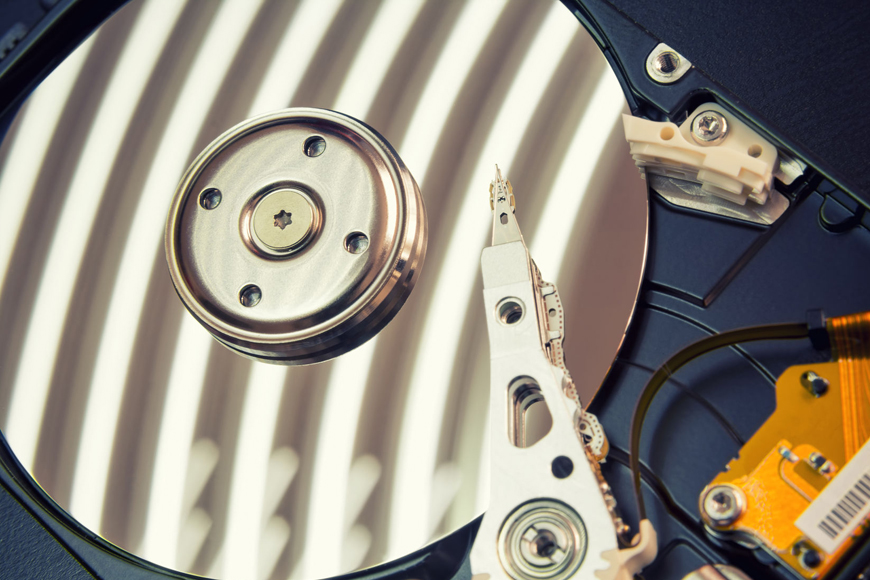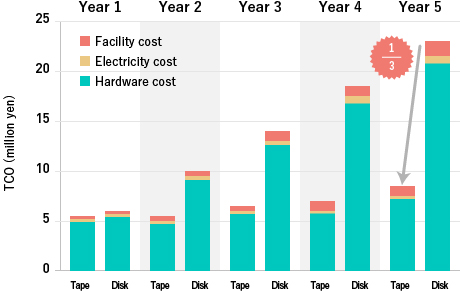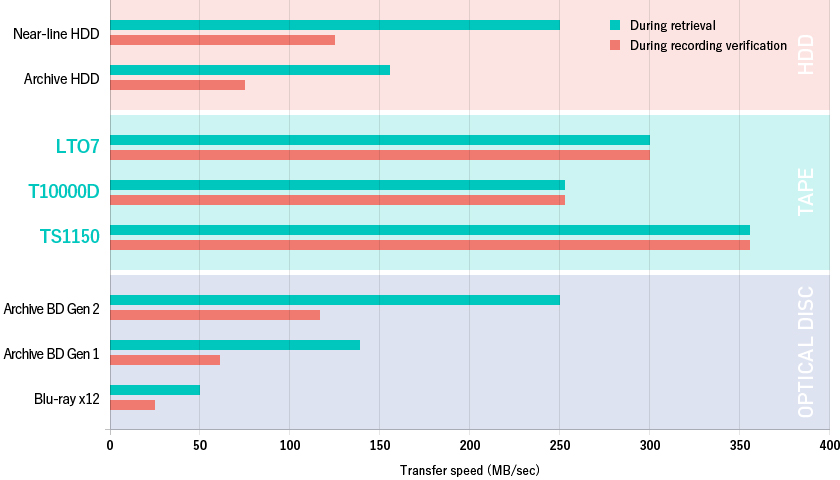
Low Total Cost of System
Tape storage has the lowest unit price per volume among all storage media, which is advantageous when building a large-scale system. In addition, since tape storage consumes power only when the backup is being executed, there is no cost to maintain the tape system. As a result, the total cost of ownership (TOC), including the electricity cost and other running costs - the total user cost - can be kept very low.
The figure on the right compares the totals of the hardware cost, electricity cost and facility cost needed to expand the data capacity of a system, using both tape systems and disk systems, when the storage is expanded by 56 TB annually (by 280 TB for 5 years).
Comparison of Total Hardware Cost

(Source: Fujitsu)
Low Power Consumption
HDDs consume a certain amount of power because they are still running even while idling (as well as while recording/reproducing). In contrast, magnetic tape systems rarely require power while idling, and no electricity cost is required for maintaining media. Tape storage is a highly economical system with low power consumption.
The figure on the right compares the power consumption between tape systems and disk systems when the storage capacities are 50 TB, 140 TB, and 280 TB.
Comparison of Power Consumption
Between Tape Systems and Disk Systems

(Source: Fujitsu)
Low Unit Price per Capacity
Since the unit price per capacity of magnetic tape media is lower than that of HDD, the higher the number of cartridges, the lower the unit price of the entire system will be.
Trends of Unit Prices per Capacity

(Source: JEITA)
Safe Long-term Storage
Reliability is an advantage of magnetic tape systems. Magnetic tape media are optimal for storing data safely for a long time. Magnetic tape systems have low risks of data loss due to blackouts, crashes, or virus attacks, etc., and are an optimal option for BCP.
- BCP stands for Business Continuity Plan.
Offline/Portability
Tape media, which can store data offline and are portable, are suitable for remote data storage to protect important data from disasters and other risks.
High Reliability
"Tape storage is troublesome and requires great care." Many people may have this impression about tape storage. However, tape storage today has a lower failure rate and lower risks of data loss caused by blackouts, crashes, or virus attacks, etc. than HDD storage. Tape storage is a highly reliable storage system.
Hardware Failure Rate and
its Occurrence Volume by Device

High Transfer Rate
Although magnetic tape systems give the impression that they read data slowly, LTO7 can transfer data at a high speed of 300 MB/second (750 MB/second when the data is compressed), which is more than 20% faster than other storage systems.
In contrast, since the transfer rate of tape systems does not change during recording verification, they can record twice as fast as other storage systems.
Data Transfer Rate (During Retrieval and Recording Verification)

This chart shows the time required for one drive to read a single file. For tape and optical disk storage systems, it is assumed that time is needed to load media into the drive and access the desired data. When the data size is small, an HDD system, which is online, can read the data in a very short time because its access speed is high. However, when the data size is approximately 30 GB or more, the transfer speed of a tape system is advantageous, and it can read data faster than a HDD system. This shows that HDD systems have the edge for small data sizes, and that tape systems are superior for large data sizes. The optical disk system shows inferior performance in both areas.
Data Transfer Times and Data Sizes

